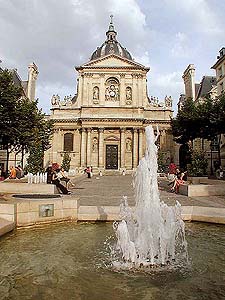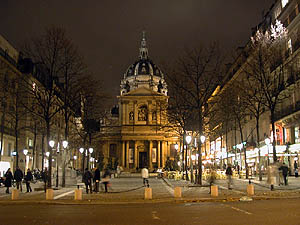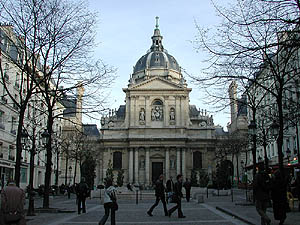Latin Quarter - Sorbonne

Robert de Sorbon founded a college in 1253 for theology students without money. The pope approved of the idea, and it later became the University of Paris. Student life was ruled by a rigorous class schedule: dialectics, astronomy, grammar, rhetoric, and math. The students' discipline had to be strict to endure the early rising and studies stretching into the evening. The only remnants of the old college are the traces of the chapel, visible in the Sorbonne courtyard.
Cardinal Richelieu was elected president of the Sorbonne in August 1622 and decided to rebuild it all. He gave the work to Jacques Le Mercier and the first stone was laid on March 28, 1627. The Sorbonne Church was begun in 1635, and is the home of Richelieu's tomb, and Girardon's sculpture of the Cardinal. The chapel is the only building still standing from this era. The Sorbonne was rebuilt again by Nenot in 1883 in order to provide more room for the increasing demands of students. Amphitheaters, test rooms, labs, a library with over 2 million works, and an observatory were all built for the growing student body.
The Sorbonne's international reputation has always placed it among Europe's most important universities. It is a vital part of a long university tradition.
 |  |